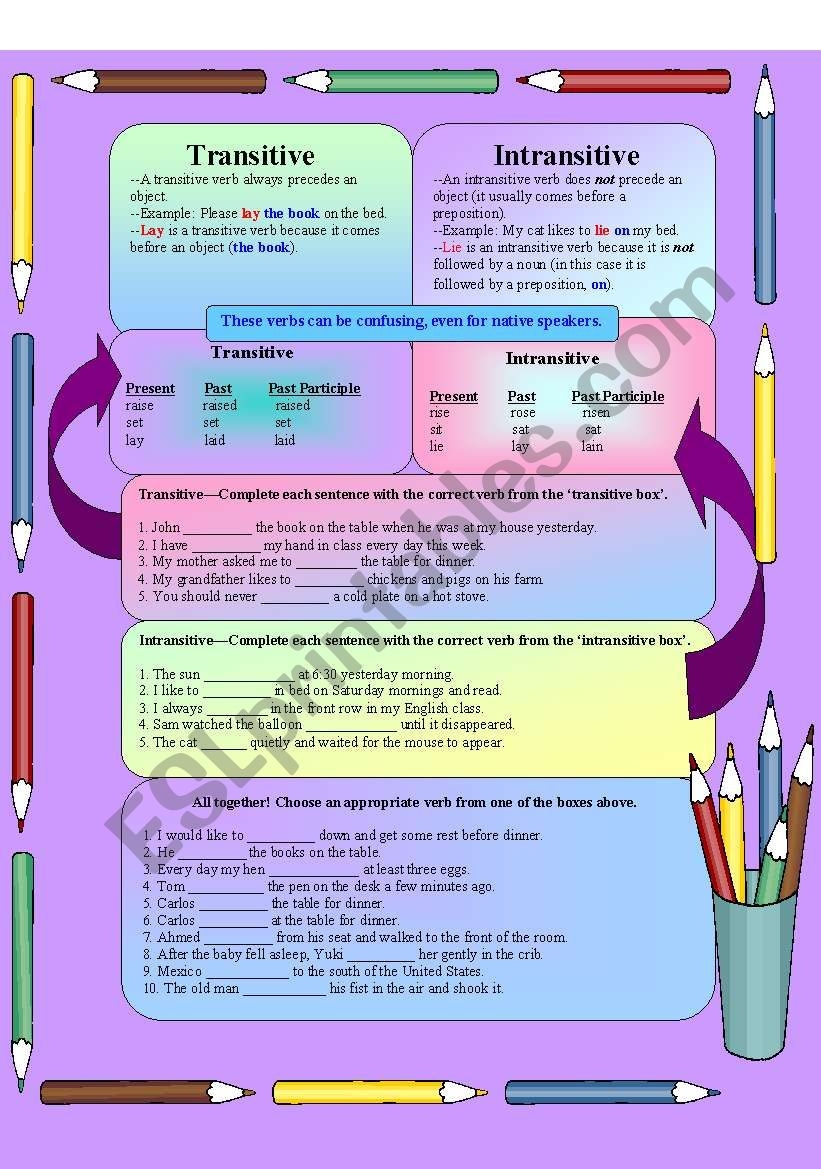Understanding the difference between transitive and intransitive verbs is essential in mastering the English language. Transitive verbs require a direct object to complete their meaning, while intransitive verbs do not. Knowing how to identify and use these verbs correctly can greatly improve your writing and communication skills.
One way to practice and enhance your knowledge of transitive and intransitive verbs is through exercises. By engaging in various exercises, you can strengthen your understanding of how these verbs function in sentences and improve your overall language proficiency.
Transitive vs Intransitive Verbs Exercises
One exercise you can do is to identify whether a verb in a sentence is transitive or intransitive. For example, in the sentence “She ate dinner,” the verb “ate” is transitive because it requires a direct object (dinner) to complete its meaning. On the other hand, in the sentence “He sleeps peacefully,” the verb “sleeps” is intransitive as it does not require a direct object.
Another exercise you can try is to rewrite sentences using both transitive and intransitive verbs. This will help you practice forming sentences with different types of verbs and understand how they impact the overall meaning of the sentence. For instance, you could rewrite the sentence “The dog chased the cat” using an intransitive verb like “The dog ran quickly.”
Additionally, creating your own sentences using transitive and intransitive verbs can be a helpful exercise. This allows you to apply your knowledge and understanding of these verbs in a practical way. Try to vary the types of verbs you use and experiment with different sentence structures to further enhance your skills.
Lastly, practicing with exercises that include both transitive and intransitive verbs in context can be beneficial. This will help you see how these verbs are used in real-life situations and improve your ability to recognize and use them correctly. Look for exercises in textbooks, online resources, or create your own to challenge yourself.
In conclusion, mastering transitive and intransitive verbs through exercises is a valuable way to improve your English language skills. By actively engaging in exercises that focus on these verbs, you can enhance your understanding, usage, and overall proficiency in the language. Practice regularly and continue to challenge yourself with different exercises to see noticeable improvement in your writing and communication.
